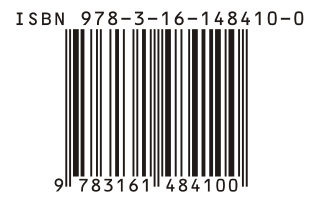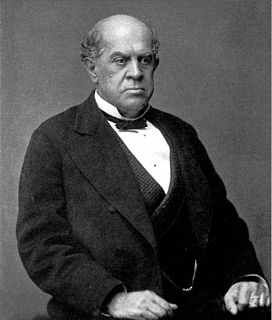
Domingo Faustino Sarmiento was an Argentine activist, intellectual, writer, statesman and the seventh President of Argentina. His writing spanned a wide range of genres and topics, from journalism to autobiography, to political philosophy and history. He was a member of a group of intellectuals, known as the Generation of 1837, who had a great influence on nineteenth-century Argentina. He was particularly concerned with educational issues and was also an important influence on the region's literature.
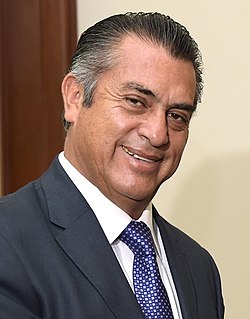
The Mexican state of Nuevo León has been governed by more than a hundred individuals in its history, who have had various titles and degrees of responsibility depending on the prevailing political regime of the time.

Mariano Paredes y Arrillaga was a Conservative Mexican general and president. He took power via a coup d'état in 1846. He was the president at the start of the Mexican–American War.

Juan Nepomuceno Almonte was a 19th-century Mexican official, soldier and diplomat. He was a veteran of the Battle of the Alamo during the Texas Revolution. Almonte was also a leader of Mexico's Conservatives in the 1860s and served as regent after the Second Mexican Empire was established by Napoleon III of France.

The Governor of Chiapas is the chief executive of the Mexican state of Chiapas. The state constitution stipulates a term of 6 years, to which governors can only be elected once. It also specifies the qualifications for becoming Governor: a Mexican citizen by birth, aged at least 30 years old, and having not less than 5 years residency in Chiapas. The current governor is Rutilio Escandón from the MRN, who assumed the position in 2018.
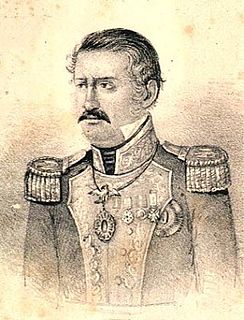
Gabriel Valencia (1799–1848) was a Mexican soldier in the early years of the Republic. From December 30, 1845 to January 2, 1846 he served as interim president of Mexico. He was the President of the Chamber of Deputies in 1843.

Giuseppe Garibaldi was an Italian general and nationalist. A republican, he contributed to the Italian unification and the creation of the Kingdom of Italy. He is considered one of the greatest generals of modern times and one of Italy's "fathers of the fatherland" along with Camillo Benso, Count of Cavour, Victor Emmanuel II of Italy and Giuseppe Mazzini.

Ángel Vicente "Chacho" Peñaloza was a military officer and provincial leader prominent in both the history of La Rioja Province and the Argentine Civil Wars that preceded national unity.
José Francisco Álvarez (1796–1841) was an Argentine lawyer, military and politician who served briefly as governor of the province of Córdoba. He was born in Córdoba, in the Viceroyalty of Rio de la Plata, and died in San Juan, Argentina on August 22, 1841.
The Chancellor of Bolivia is the head of the Ministry of Foreign Affairs, according to common Latin American usage of "Chancellor". The current Chancellor is Fernando Huanacuni Mamani, who was appointed by President Evo Morales in January 2017.
The Battle of La Ciudadela was a fight during the Argentine Civil Wars between Federalist troops commanded by Facundo Quiroga and Unitarian troops of Gregorio Aráoz de Lamadrid on the outskirts of San Miguel de Tucumán, Argentina, on 4 November 1831. It resulted in a decisive victory by the Federalists.
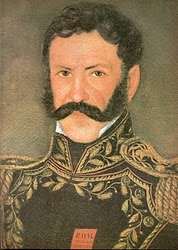
José Félix Esquivel y Aldao was an Argentine Dominican friar who became a General and then the undisputed Federist caudillo of Mendoza Province. His ability as a soldier and his cruelty became legendary. The largely fictionalized biography that Domingo Faustino Sarmiento wrote fed his legend. An effective ruler, he did much for his province, but was also one of the cruelest of the federalist leaders.
The Battle of Rodeo del Medio, fought in Mendoza Province, Argentina on 24 September 1841, was a battle between the Federalist army of Ángel Pacheco and the Unitarian army of Gregorio Aráoz de Lamadrid during the Argentine Civil Wars. It gave victory to the Federalists that would last for a decade.
Amán Rawson was an American physician and merchant based in San Juan, Argentina, who was well known during the first half of the nineteenth century. He was the father of the Argentine interior minister Guillermo Rawson.
José Santos Ramírez was an Argentine soldier for a long time in the militia of Mendoza Province, and was involved on the Federalist side in several of the Argentine Civil Wars.
José Manuel Quiroga Sarmiento was an Argentine priest who became Bishop of San Juan de Cuyo. While in that position, he was briefly Governor of San Juan Province, Argentina.
Omar Acha is an Argentine historian and political essayist. He is a researcher at the Consejo Nacional de Investigaciones Científicas y Técnicas and also at the Centro de Investigaciones Filosóficas (Argentina). He teaches Philosophy of History at the Universidad de Buenos Aires. He is also a member of the editorial board of Herramienta. Revista de Teoría y Crítica Marxista, published in Buenos Aires.
"L'Accordéoniste" is a song made famous by Édith Piaf. It was written in 1940 by Michel Emer, who then offered it to her.












